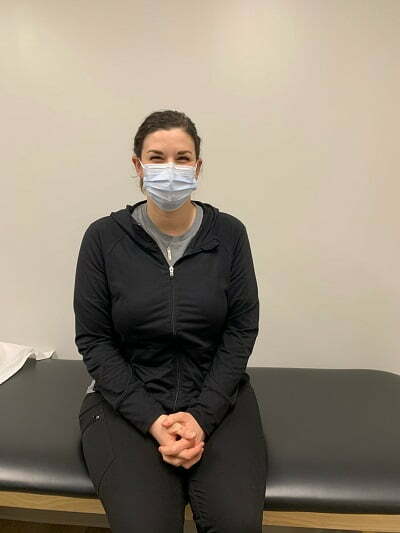Patient Experience: Diagnostic Needle Imaging
A video can sometimes tell a clearer story than an image. This is the reason the new “camera on a needle” diagnostic tool is being used to diagnose shoulder and knee injuries for some patients.
MRI is a scan orthopedics traditionally use to examine bones, joints, and soft tissues such as cartilage, muscles, and tendons for the presence of damage and defects. An MRI is a 20 to 80 minute scan and is a separate visit without the orthopedic surgeon. Some defects do not show up well or at all on MRIs. Loose bodies and detailed intra-articular pathology can be better diagnosed via camera inside the joint capsule. Thanks to advances in technology, the smaller needle size (called Nanoscope) makes it possible to do a diagnostic procedure in the office setting
Dr. Daggett creates a treatment plan for patients using needle imaging. This patient, Jamie, had a complex history of both surgery and medical treatments to the knee when she was younger and now has had a significant increase in her pain. “Given her previous surgeries, it was much more accurate identifying the source of her pain. An MRI in this situation would have been unclear and perhaps led to an inappropriate treatment plan.”
For Jamie, Dr. Daggett outlined a few treatment options and will continue trying to treat conservatively for the time being, but if surgery is needed, “We now have a definitive diagnosis and plan.”
Jamie recommends in-office diagnostic tool. She reported it to be “better, quicker, faster with real-time results,” in comparison to the traditional MRI. She also told us that she “loved to be able to see what was going on in my knee firsthand for myself…” She’s not alone; the immediate analysis and conversation with the surgeon during the procedure is a major benefit most needle imaging patients report. People want immediate answers and this provides an avenue for an engaged patient experience.
Diagnostic Needle Imaging is not for all patients or injuries, but recent studies demonstrate it is more accurate for some conditions than MRI. Some patients who do not qualify for an MRI may also find this beneficial. These candidates include: people with claustrophobia, pacemakers, metal implants or internal defibrillator. Some second-look evaluations, previous surgical history or “negative” MRI with continued pain also may find needle imaging more effective in obtaining a diagnosis.
Currently, Sano Orthopedics is utilizing this for select knee and shoulder patients.

